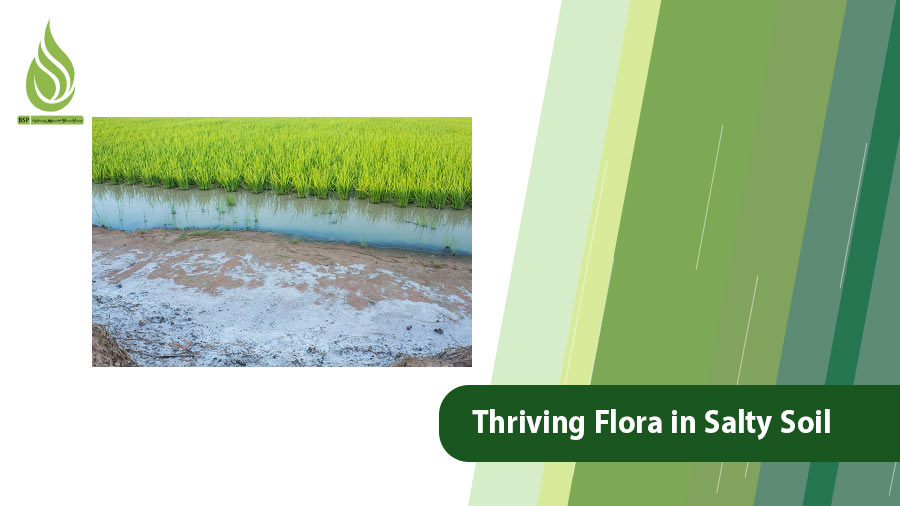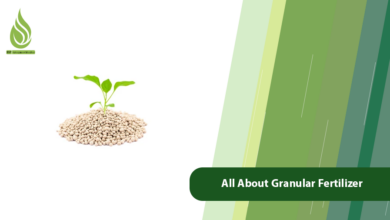
Salt Tolerant Plants: A Guide to Thriving Flora in Salty Soil
A significant portion of agricultural soils worldwide face challenges with soil salinity, often stemming from climatic conditions or environmental factors. When soil salinity is within manageable levels, existing solutions can effectively mitigate this issue. However, in cases of severe salinity, productivity can be sustained by cultivating trees and plants that are resistant to these conditions. In this piece, we aim to highlight various salt-tolerant trees and plants while exploring the best practices and pitfalls of managing saline soil on a global scale. Let’s delve into how these resilient species can flourish in demanding environments, aiding in the preservation of agricultural productivity amidst salinity challenges.
What is Soil Salinity?
Soil salinity is a critical factor assessed during soil testing. Before delving into the details, it’s essential to grasp the concept of soil salinity. When the salt content in the soil surpasses normal levels, soil salinity emerges. This issue is commonly observed in arid and semi-arid regions, as well as in humid and semi-humid areas near coastlines.
Salt-tolerant plants are species capable of thriving in saline soil conditions. Some plants can even withstand watering with seawater in high-salinity soils. This group of plants plays a crucial role in reducing excess salt in the soil, making them invaluable for combating desertification. Notable examples of such plants include mangroves and Glassworts.
Soils are categorized into several primary groups based on salinity levels:
- Fresh Soils: These soils exhibit low to negligible salinity levels and are ideal for plant cultivation.
- Saline Soils: Characterized by a high concentration of soluble salts, these soils can impact plant growth significantly.
- Sodic Soils: These soils contain a high proportion of sodium in comparison to other cations, often leading to issues such as poor permeability and decreased fertility.
- Saline-Sodic Soils: These soils represent a blend of saline and sodic characteristics, featuring both high salt content and elevated sodium levels.

Soil Electrical Conductivity (EC) is a metric used to gauge a soil’s capacity to conduct electric current. This characteristic is influenced by the concentration and types of solutes and ions present in the soil. Generally, soil salinity levels directly correlate with its electrical conductivity—higher salinity equates to higher conductivity. EC meters are specialized devices employed to measure soil electrical conductivity, typically in millisiemens per centimeter (µS/cm).
Soils with an EC below 2 millisiemens/cm are suitable for a wide range of agricultural practices. Those with EC levels ranging from 2 to 8 millisiemens/cm may be suitable for certain crops but unsuitable for others. Soil exceeding an EC of 8 millisiemens/cm is generally unsuitable for most agricultural cultivation.
Introducing Salt Tolerant plants
Before introducing any plants, it’s prudent to assess the salinity of your soil. Conducting a soil test will unveil the extent of salinity and solute levels present. If the salinity is manageable, various methods can be employed to reduce it, preparing the land for planting. However, in cases of excessive salinity, rather than attempting to lower it, consider opting for plants that thrive in saline conditions.
Here are some salt-tolerant plants suitable for cultivation in saline soils:
- Ornamental Plants Resilient to Salinity: These plants are perfect for green spaces in low-water or saline soil areas. From cacti and Black locusts to lace shrubs and evening primrose, a diverse range including Snowberry, Acalypha, Hedgenettles, Trumpetbushes, yuccas, eucalyptus, five-finger plants, peacock flowers, Aeluropus, yarrow, and artemisia can transform and beautify green spaces. These plants not only thrive in salty soils but also enhance the aesthetics of their surroundings.
- Salt-Resistant Medicinal Plants: Some plants not only withstand salinity but also boast medicinal properties deeply rooted in traditional medicine. Notable among these are five fingers, eucalyptus, yarrow, Hibiscus, sesame, sage, marjoram, thyme, rosemary, and saffron, offering both resilience to salt and therapeutic benefits.
- Salt-Resistant Crops: Modified varieties of wheat, barley, and corn, along with select tomato strains, exhibit adaptability to grow in saline soils. Additionally, crops like cotton and sugar beet can thrive in salty soil conditions, providing agricultural diversity even in challenging environments.

Salt Tolerant Trees
Trees that withstand high salt concentrations play a vital role in combating soil salinity. Here are some notable salt-tolerant trees:
- Palm tree
- Olive
- Willow
- Cedar
- Mountain species of pine
- Pomegranate
- Almond
- Barberry
- Jujube
- European ash
- Maple
- Russian Olive
- Mangrove
- Eucalyptus
These trees not only enhance soil quality and mitigate salinity’s adverse effects but also flourish in arid and semi-arid regions.
Determining the optimal climate for each tree species and their respective salt tolerance levels requires further investigation. Consulting seasoned farmers and agricultural experts is essential for tailored guidance. For instance, the pistachio tree thrives in saline soil but demands hot summers and mild winters for fertility. Extreme winter cold can hamper its productivity, making it crucial to consider local climate conditions when planning cultivation strategies.

Detecting Soil Salinity
Identifying whether the soil is salty involves more than just observing stunted growth or yellowing leaves in plants. While these symptoms can hint at salinity issues, a definitive diagnosis requires a systematic approach. Here are several methods to ascertain soil salinity levels:
- Electrical Conductivity (EC) Measurement: Utilizing EC meters to gauge soil conductivity. Elevated electrical conductivity often signifies heightened salinity levels.
- Chemical Analysis: Collecting soil samples for analysis at certified labs. These tests reveal the presence and concentration of dissolved salts, cations, and anions in the soil.
- Visual Inspection: Scanning for visible indicators like white salt deposits on the surface or near plant roots. Also, diminished plant growth and leaf yellowing, are common symptoms of salinity stress.
- Water Assessment: Testing irrigation or rainwater for salinity levels. High salinity in water sources could indicate corresponding soil salinity.
- Plant Monitoring: Observing the growth patterns and health of plants in the vicinity. Flourishing salt-tolerant plants often thrive in saline conditions, offering clues about soil salinity.
By combining these methods, a more accurate assessment of soil salinity can be achieved, paving the way for effective remediation strategies.
Causes and Remedies for Soil Salinity
Soil salinity stems from various factors, with a primary culprit being the prevalence of dry and semi-arid climates. Over 70% of the country’s territories lie in such arid regions, predisposing them to salinity issues. Beyond aridity, several other triggers contribute to soil salinity, including intense evaporation, saline groundwater intrusion, the use of salty irrigation water, inadequate soil leaching, elevated soil pH levels, human-induced deforestation, unsustainable agricultural practices, excessive reliance on chemical fertilizers, and flaws in drainage systems.
Addressing soil salinity necessitates tailored solutions when caused by the aforementioned factors. Several strategies can effectively mitigate soil salinity. These include soil leaching, pre-planting watering, altering irrigation techniques, judicious fertilization practices, deep plowing, and the incorporation of organic fertilizers to enhance soil health and reduce salinity levels. By implementing these solutions, soil salinity can be significantly controlled, fostering healthier and more productive lands. We suggest you take a look at our guide to find out how to reduce salinity in soil.
Navigating Natural Soil Salinity Challenges
At times, soil salinity arises as a natural consequence of climatic conditions rather than human errors. In such scenarios, a strategic approach involves cultivating salt-tolerant plants. Consulting with experts is key to selecting the most suitable plant or tree varieties for these environments. Modern advancements in soil and water testing enable us to gauge salinity levels accurately, facilitating the preemptive identification of plant species best suited for cultivation in these saline-prone regions. By leveraging these insights, we can proactively address soil salinity challenges and foster thriving green spaces resilient to saline conditions.
Optimal Fertilizers for Soil Salinity Mitigation
In regions plagued by salty soil, cultivating salt-tolerant plants remains a top strategy. However, when addressing soil salinity directly, utilizing specific fertilizers can be instrumental in its reduction. Here are some top fertilizers renowned for combating soil salinity:
- Ammonium Sulphate Fertilizer: Rich in sulfur, Ammonium Sulphate aids in lowering soil pH and salinity levels. Besides reducing salinity, it provides essential nitrogen and enhances soil quality. The application amount hinges on soil salinity, product type, soil variation, and plant requirements, warranting consultation with experts for precise dosage and timing.
- Potassium Fertilizer: Potassium chloride proves effective in counteracting sodium’s adverse effects and salinity, fostering robust plant growth.
- Calcium Fertilizers: Calcium plays a pivotal role in displacing sodium from the soil and enhancing soil structure, contributing to salinity reduction.
- Humic Acid: Facilitating the absorption of soluble salts by the soil, humic acid aids in improving saline soil conditions and boosts plant resilience against salinity stress.
Before applying any fertilizer, conducting a soil test is advisable to determine the soil’s condition and nutrient levels. This analysis aids in selecting the most suitable fertilizer to address soil salinity effectively, ensuring optimal plant growth and soil health. Consulting with experts for tailored guidance on fertilizer selection and application is recommended for optimal results.
